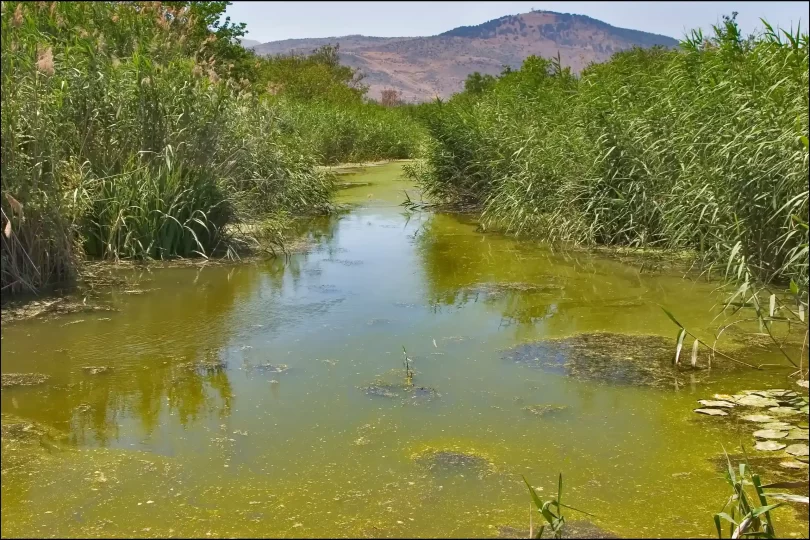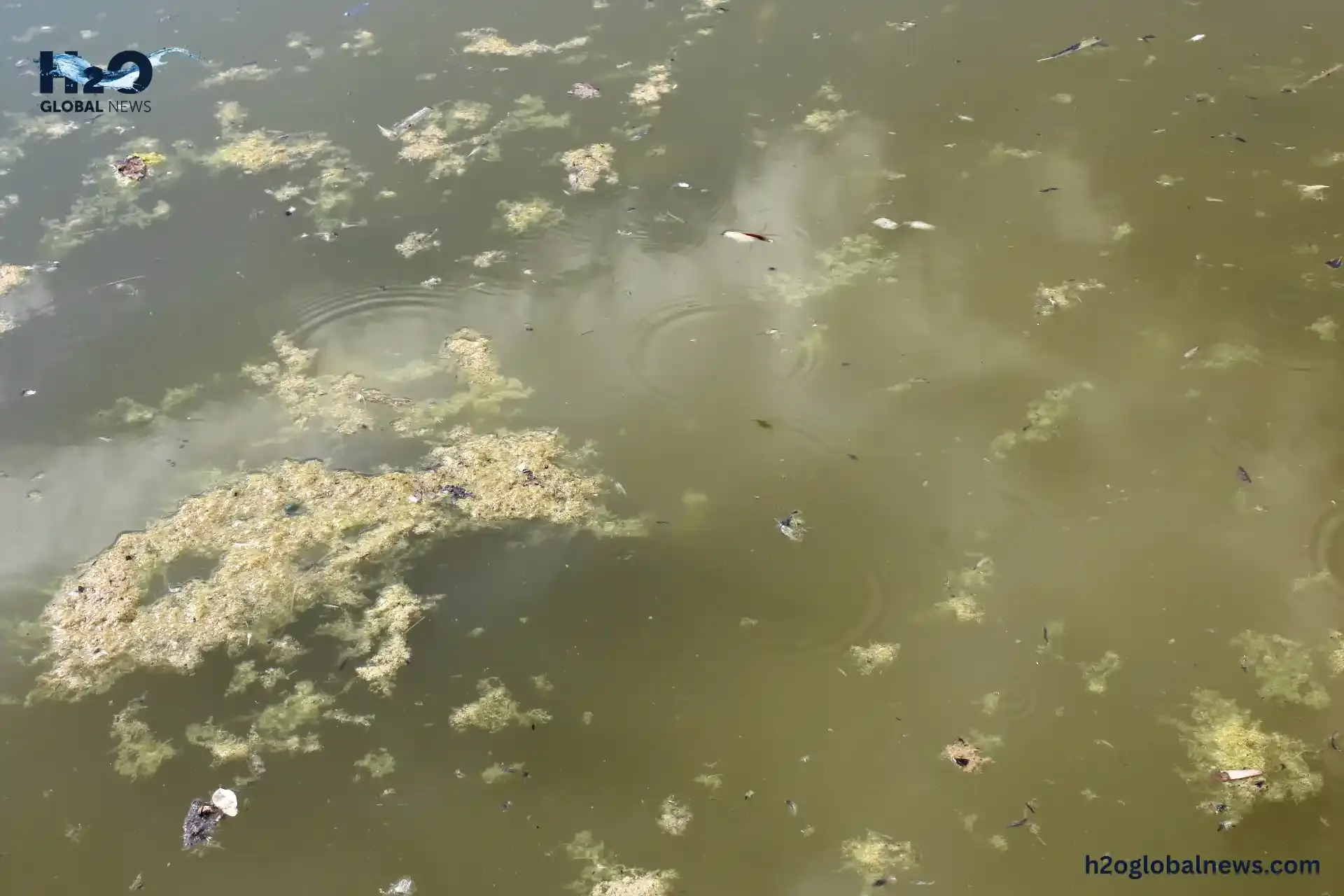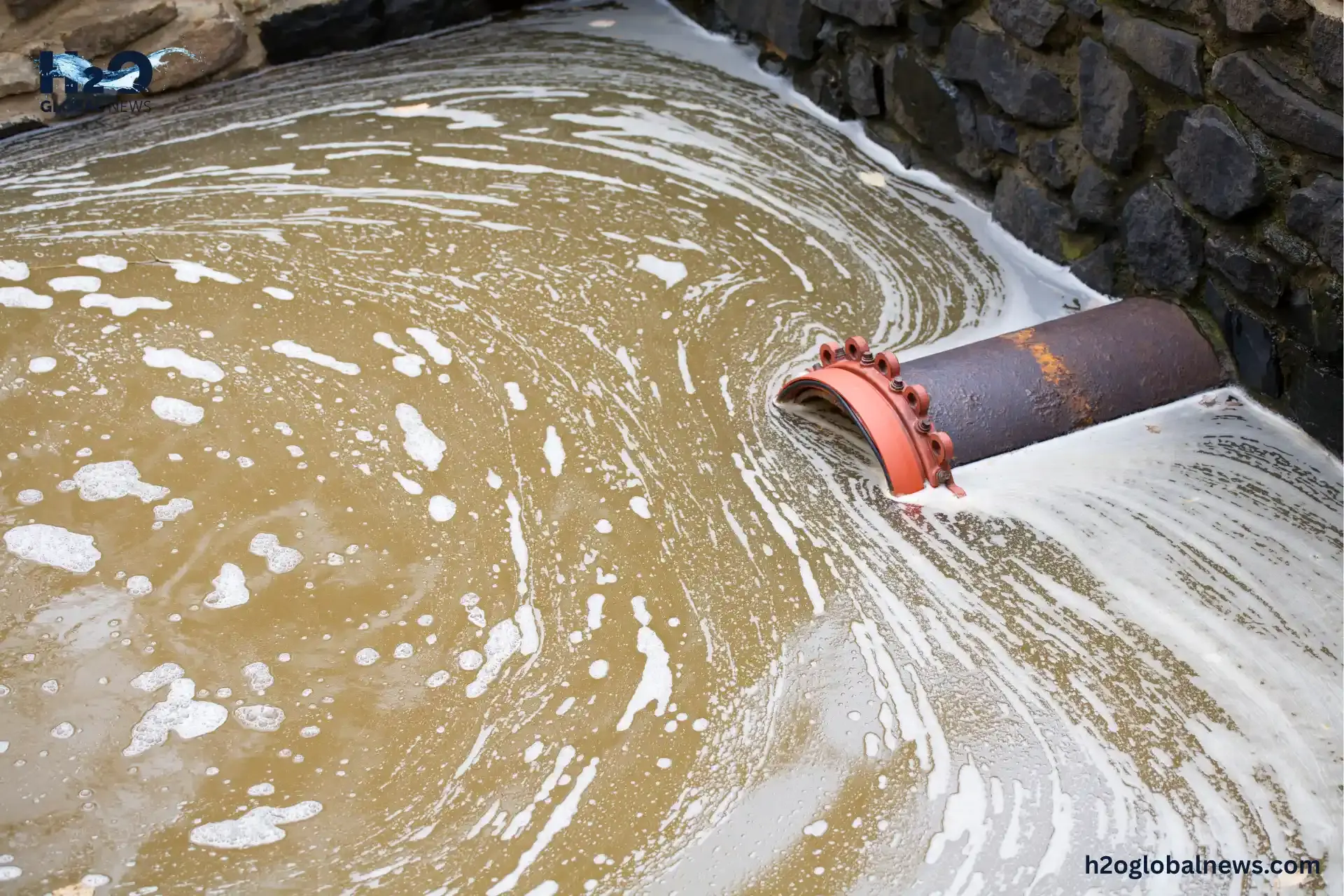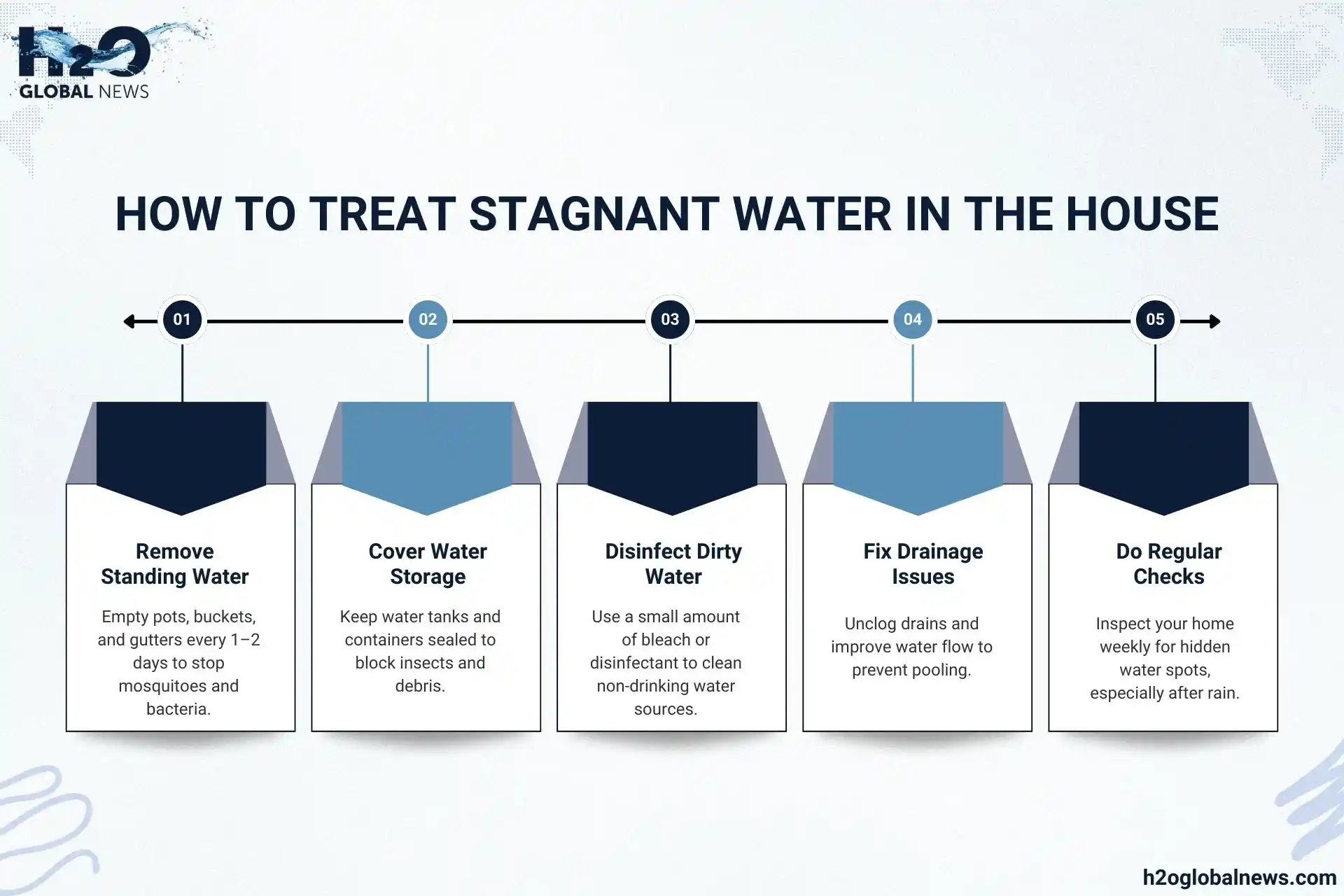Stagnant water can cause many problems if it is not removed quickly. You might see it in buckets, puddles, drains, or near your house after rain. It smells bad, attracts mosquitoes, carries harmful bacteria and causes health problems. According to the WHO, over 3.4 million people die each year from water-related diseases, many of which are linked to dirty or stagnant water. So, let’s discuss what stagnant water is, the dangers it can cause, the bacteria it may carry, and how you can treat and prevent it.
What Is Stagnant Water?
Stagnant water is any type of water that sits still without moving for a long time. It can collect in many places, such as open buckets, flowerpots, clogged drains, unused swimming pools, and even in puddles left after rain. Because it doesn’t flow or get refreshed, it quickly becomes dirty and unhealthy. This still water often gets warm from the sun, and with no circulation or cleaning, it starts to collect dirt, insects, algae, and harmful germs.
When water sits for more than one or two days, it creates the perfect place for bacteria and insects like mosquitoes to grow. That’s why stagnant water is considered unsafe and needs to be removed or treated quickly. One common example of stagnant water in gardens is waterlogging after rainfall or irrigation.
Dangers of Stagnant Water
Water is usually divided into three categories based on how clean or dirty it is. Category 1 is the cleanest and safest, like drinking water. Category 2 is slightly dirty and may contain some harmful particles. But Category 3 is the most dangerous. This is known as black water, and it includes water that is heavily contaminated. Stagnant water falls into Category 3.
Stagnant water may look calm and quiet, but it can cause a lot of problems. Let’s break down the dangers one by one.
1. Mosquitoes
The mosquitoes can carry diseases like dengue, malaria, and the Zika virus, which can make people seriously ill. Even a small amount of standing water can attract mosquitoes, and they can lay hundreds of eggs in it.
2. Bacterial Infections
The dangers of stagnant water go far beyond just attracting mosquitoes. It can also cause harmful infections. When water stands still, it becomes a warm and moist environment, which helps bacteria grow fast. If you touch or drink stagnant water by mistake, it can cause infections, stomach problems, and skin diseases.
3. Smell
The smell of stagnant water is often strong and bad because of rotting organic matter, like leaves and dead insects. It often looks green, cloudy, or dirty, which makes the place look unhygienic and unpleasant.
4. Algae and Mould Growth
Still water promotes the growth of algae and mould, especially in humid areas. These can damage your property, like walls and floors, and if inhaled, the mould can cause breathing problems and allergies.
5. Parasites
Besides bacteria, stagnant water can host tiny parasites that are dangerous when ingested. These parasites can cause severe stomach cramps, nausea, and even long-term digestive issues. It’s not just physical illness; exposure to dirty water may even affect brain function.
How to Treat Stagnant Water in the House?
Treating stagnant water is important to protect your health and keep your home clean. One effective method of stagnant water treatment is to remove or drain any standing water you find around your home. Check areas like plant pots, buckets, roof gutters, and your yard after rain. Empty out water from these places every one to two days to stop mosquitoes and bacteria from growing.
In areas like water tanks or storage containers, make sure to keep them covered tightly to stop insects and dirt from getting inside. If the water has already gone dirty, you can use a small amount of bleach or disinfectant to clean it, but remember not to use this water for drinking.
How to Prevent Stagnant Water?
Preventing stagnant water is very important for keeping your home clean, safe, and healthy. Using digital water monitoring solutions can help spot early signs of water buildup. Here are some easy and effective ways to prevent stagnant water:
- Always Cover Water Storage Containers: If you store water in tanks, buckets, drums, or any large container, make sure to cover them tightly. This stops rainwater, dust, and insects from getting inside.
- Clean Gutters and Drains Regularly: Leaves, dirt, and trash can block your home’s gutters and drains, especially during rainy seasons. This pooled water becomes stagnant quickly. Clean your gutters and drains at least once a month, or more during the rainy season to prevent this issue.
- Fix Any Leaking Pipes or Faucets: A slow-dripping tap or a leaking pipe can create puddles around your home. These puddles can become stagnant water. If you notice any leaks in your kitchen, bathroom, or yard, get them repaired as soon as possible.
- Improve Outdoor Drainage: If your yard or garden has low spots where water collects after rain, you may need to level the ground or improve the drainage system. You can create small channels or use gravel to help water flow away from those areas
FAQs
1- Why is still water dangerous?
Still water, another name for stagnant water, is dangerous because it allows bacteria and insects to grow quickly. It’s often dirty and can lead to infections or attract pests like mosquitoes.
2- What causes stagnant water in the house?
Leaking pipes, blocked drains, uncovered buckets, and poor ventilation are common causes of stagnant water in the house. These spots allow water to collect and stay still.
3- Why is stagnant water bad?
Stagnant water is bad because it becomes a breeding ground for mosquitoes and bacteria. It can spread diseases, create a foul smell, and lead to mold or damage if it collects indoors or near walls.
4- How long does it take water to become stagnant?
Water can become stagnant in as little as 24 to 48 hours if it stays still and uncovered. Warm temperatures, dirt, and lack of movement speed up the process, allowing bacteria and insects to grow quickly.
Conclusion
Stagnant water smells bad, attracts mosquitoes, and is full of harmful bacteria. If you don’t treat it, it can make you and your family sick. That’s why it’s important to remove it quickly and keep your home clean and dry. By fixing leaks, cleaning drains, and covering water containers, you can easily stop stagnant water from forming. A few small steps can protect your health and keep your home safe.











